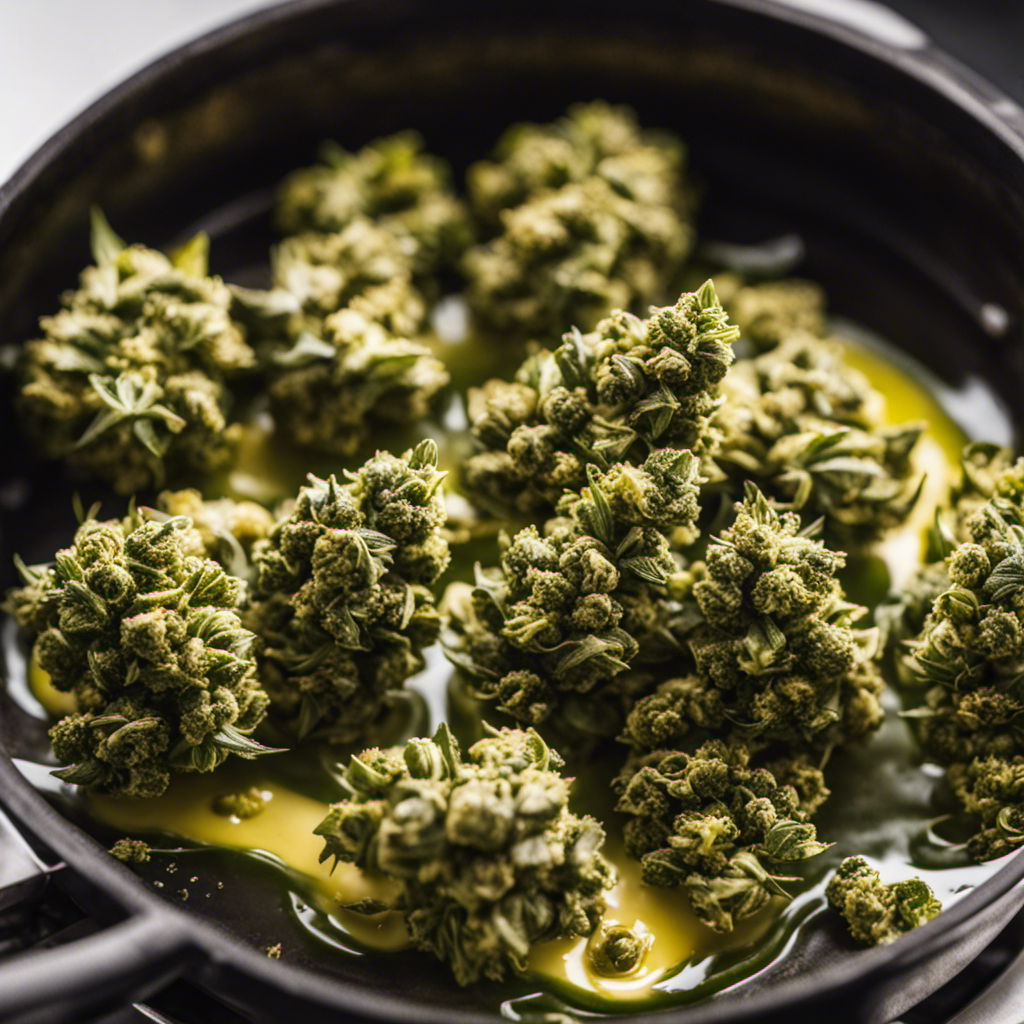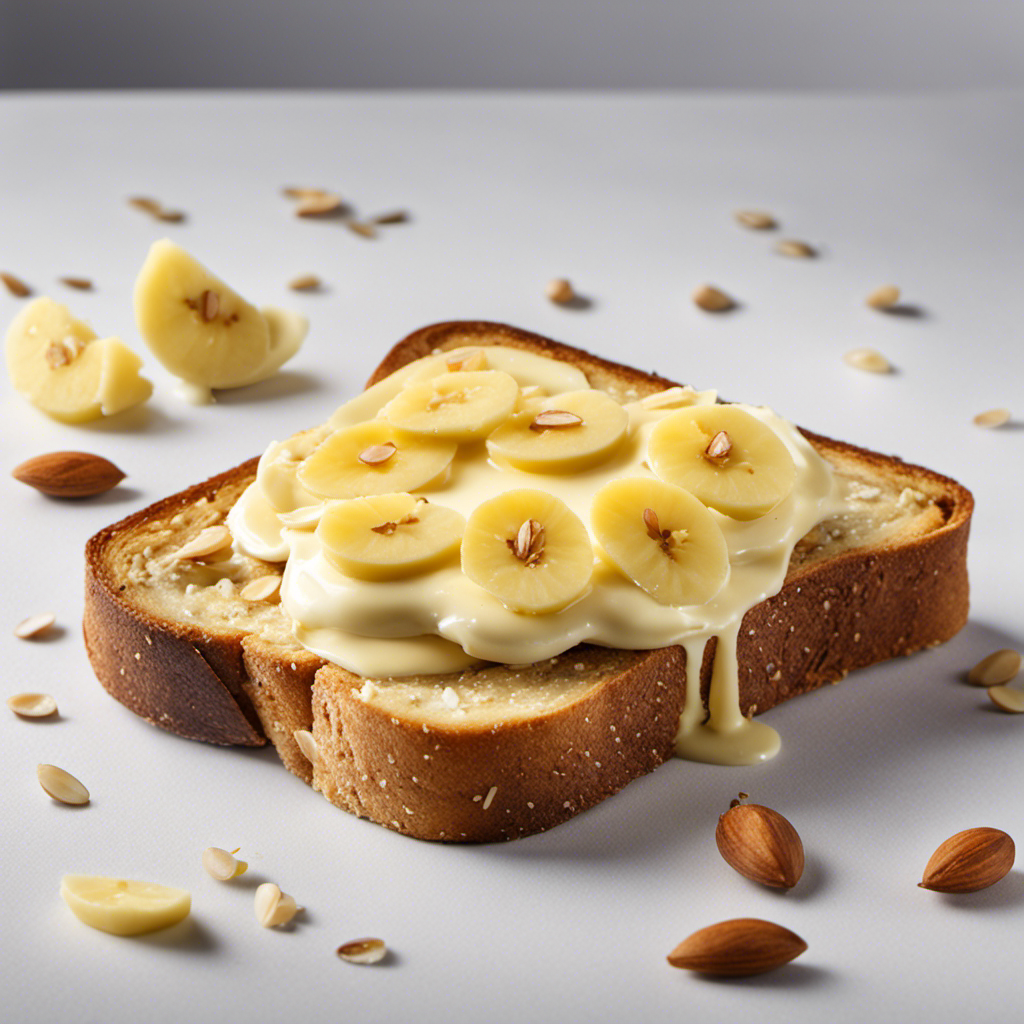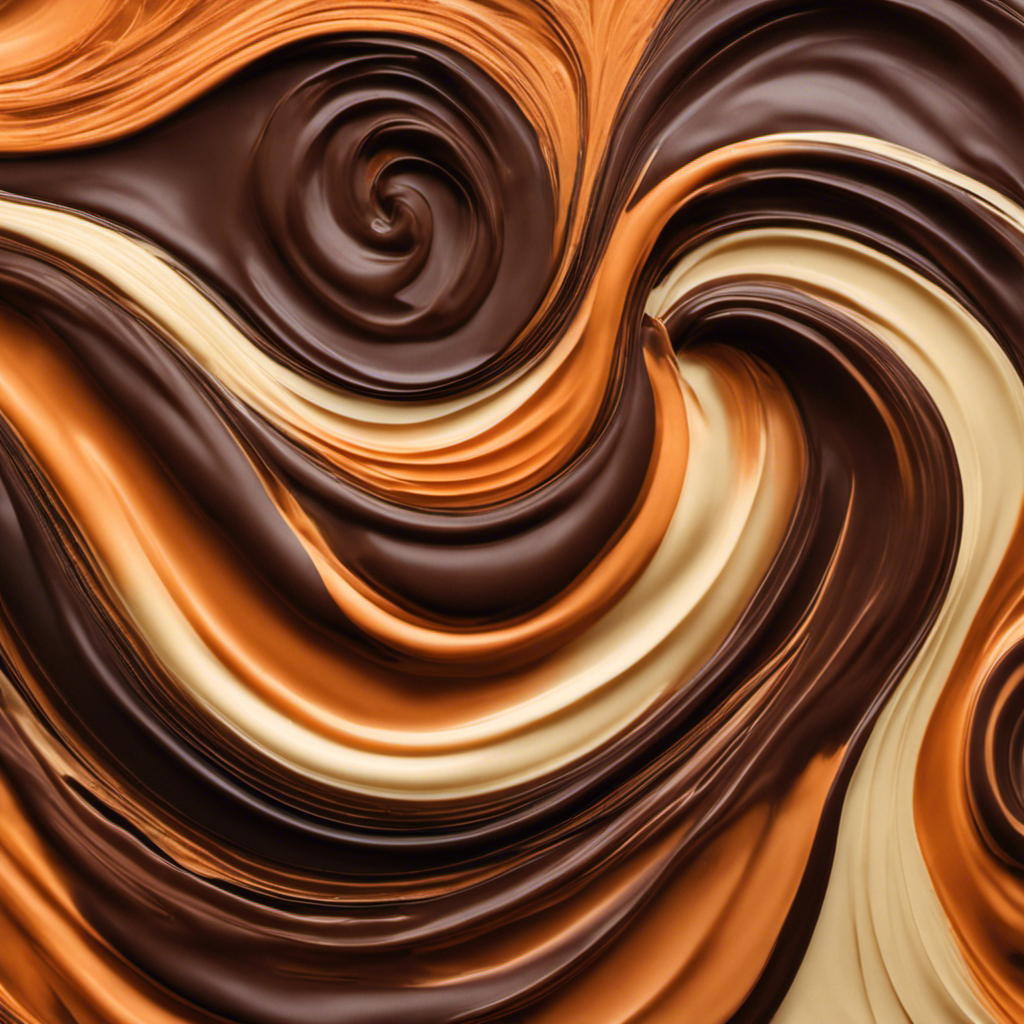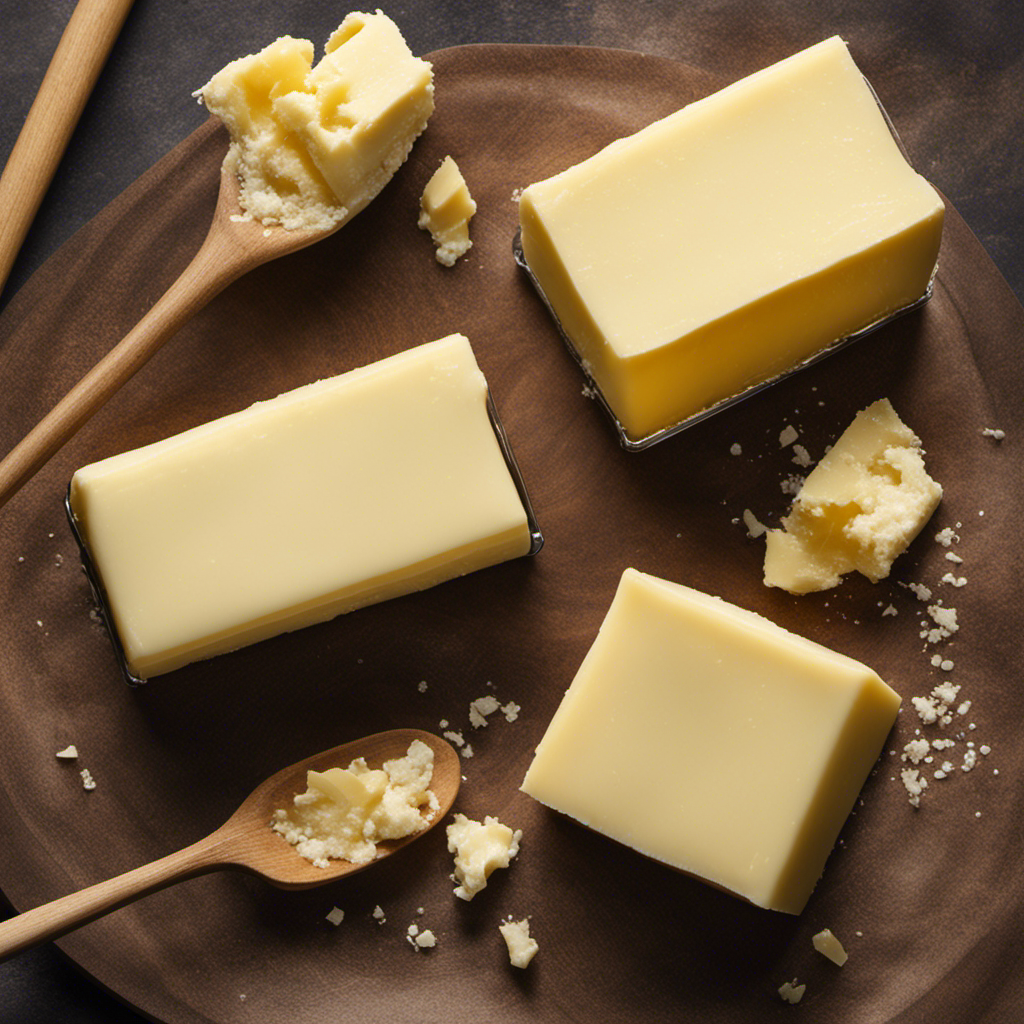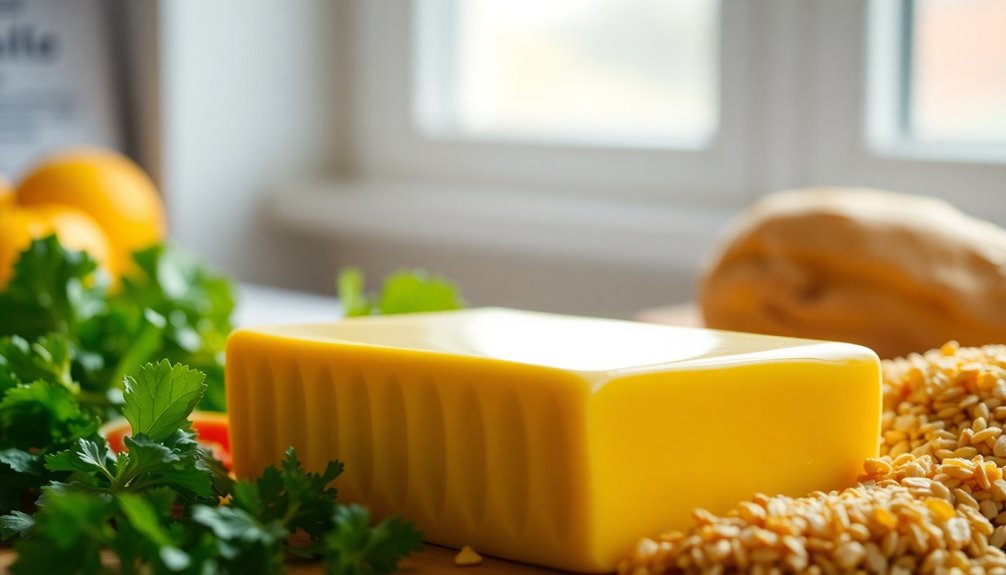I have often pondered about the perfect ratio of marijuana to butter when making edibles. After conducting several experiments and in-depth research, I have finally discovered the answer.
In this article, I’ll share with you the exact measurements and techniques to infuse one stick of butter with just the right amount of THC.
We’ll dive into the science behind calculating the potency, the crucial decarboxylation process, different infusion methods, and even dosage recommendations.
Get ready to elevate your edibles game with this foolproof guide.
Key Takeaways
- Use 1 ounce of weed for every 1 stick (1/2 cup) of butter as a starting point.
- Adjust the ratio based on personal preference and the potency of the weed.
- Coconut oil and olive oil can be used as butter alternatives with similar ratios.
- Calculate THC in weed by multiplying THC percentage by the weight of weed.
Weed to Butter Ratio
The ratio of weed to butter is important when determining how much to use. When it comes to making edibles, the potency of the weed and the desired strength of the butter are key factors.
Generally, a good starting point is to use 1 ounce of weed for every 1 stick (1/2 cup) of butter. However, this can be adjusted based on personal preference and the potency of the weed.
If the weed is highly potent, you may want to use less to avoid an overpowering taste or effect. On the other hand, if the weed is less potent, you may need to increase the amount to achieve the desired strength.
Additionally, for those looking for butter alternatives, coconut oil and olive oil can be used as substitutes, with similar ratios.
Calculating THC Content
Calculating the THC content in 1 stick of butter is essential when it comes to making edibles. To determine the potency of your homemade cannabis-infused butter, you need to measure the cannabinoids present in the weed you are using. This can be done by using a simple formula that takes into account the THC percentage of your cannabis and the amount of weed you are using to make the butter.
First, you need to know the THC percentage of your cannabis. This information can be found on the packaging or by asking your supplier. Once you have this percentage, you can calculate the amount of THC in your weed by multiplying the THC percentage by the weight of the weed.
Next, you need to determine the amount of butter you are using. A stick of butter typically weighs around 113 grams. By dividing the amount of THC in your weed by the weight of the butter, you can calculate the potency of your cannabis-infused butter.
Knowing the THC content in your butter allows you to dose your edibles accurately and ensure a consistent and enjoyable experience for yourself and others.
Decarboxylation Process
To achieve maximum THC potency in your edibles, it’s crucial to go through the decarboxylation process. This is where heat is applied to activate the cannabinoids in your cannabis.
Here are some key points to consider:
-
Decarboxylation temperature: The ideal temperature for decarboxylation is around 220°F (104°C). This ensures that the cannabinoids are activated without degrading them.
-
Potency testing methods: It’s important to test the potency of your decarboxylated cannabis to determine the THC content accurately. There are various testing methods available, including chromatography, mass spectrometry, and immunoassays.
-
Even heat distribution: To ensure an effective decarboxylation process, make sure your cannabis is evenly spread out on a baking sheet or in an oven-safe dish.
-
Monitoring the process: Keep a close eye on the decarboxylation process to prevent overheating or underheating. Use a timer and a reliable oven thermometer to maintain the desired temperature throughout.
Infusion Methods
When making edibles, you can infuse cannabis into various ingredients such as oil or butter to extract its cannabinoids. This process allows you to create potent and flavorful treats that offer a unique way to consume cannabis. While the traditional method involves simmering cannabis in butter or oil on the stovetop, there are alternative infusion methods that can enhance the potency and flavor of your edibles. Here are some tips for achieving maximum potency when infusing cannabis into your ingredients:
| Alternative Infusion Methods | Tips for Maximum Potency |
|---|---|
| Sous vide method | Use decarboxylated cannabis for better potency. |
| Slow cooker method | Stir occasionally to ensure even infusion. |
| Double boiler method | Use a high-quality strain for stronger effects. |
| Mason jar method | Store the mixture in a cool, dark place for optimal infusion. |
Dosage Recommendations
For maximum safety and effectiveness, it’s important to consider the dosage recommendations when consuming your homemade cannabis-infused treats. Proper dosing ensures that you experience the desired effects without overdoing it. Here are some key points to keep in mind:
-
Edible potency: The potency of your homemade edibles will depend on the strength of the cannabis you use. Different strains have varying levels of THC and CBD, which can affect the overall potency of your treats.
-
Effects of different strains: Each strain of cannabis has its own unique characteristics and effects. Some strains are known for their uplifting and energizing effects, while others are more relaxing and calming. Consider the effects you want to achieve when selecting a strain for your edibles.
-
Start low and go slow: It’s always a good idea to start with a low dose, especially if you’re new to edibles. You can gradually increase the dosage until you find your sweet spot.
-
Wait for the effects: Edibles can take longer to kick in compared to other consumption methods. Be patient and wait for at least 1-2 hours before deciding to take more.
Frequently Asked Questions
Can I Use Any Type of Weed Strain to Make Butter?
Yes, you can use any type of weed strain to make butter. However, different strains have varying levels of cannabinoids, which can affect the potency of the butter. It’s important to choose a strain that suits your desired effects.
Can I Substitute Butter With Another Type of Fat, Such as Coconut Oil or Vegetable Oil?
Yes, you can substitute butter with other fats like coconut oil or vegetable oil in weed recipes. Using coconut oil or vegetable oil has the benefit of producing a different flavor profile and potentially enhancing the effects of the infusion.
How Long Can I Store Weed Butter and Still Maintain Its Potency?
To properly store weed butter and maintain its potency, it’s crucial to follow the right methods. Different techniques can be used to infuse butter with weed, ensuring maximum effectiveness. Let’s delve into the details.
Can I Use Already Vaped Weed (Avb) to Make Weed Butter?
Sure, you can use already vaped weed (AVB) to make weed butter. It’s a great alternative to fresh bud. Experiment with different ratios to find the potency you prefer. Other alternatives to butter include coconut oil and olive oil.
Can I Use a Slow Cooker or Instant Pot for the Infusion Process Instead of the Stovetop Method?
When it comes to infusing weed butter, the choice between a slow cooker, instant pot, or stovetop method is crucial. Each method has its pros and cons, so it’s essential to consider factors like time, temperature control, and flavor extraction.
Conclusion
As I reflect on the journey of infusing weed into butter, I can’t help but be reminded of a wise old wizard brewing a powerful potion. Just as he carefully measures and mixes ingredients, we too must find the perfect balance between weed and butter.
Through the process of decarboxylation and infusion, we unlock the magical properties of THC. Remember, my friends, moderation is key. Follow the dosage recommendations and embark on your own culinary adventure with confidence.
May your butter be potent and your edibles be delightful.
